
Applesauce is a potent "secret weapon" in the arsenal of many bakers. It can be used to add moisture and flavor to a recipe that's already good, such as your favorite muffin or spice cake. It can also serve as a substitute for oil or eggs in many recipes, reducing fat or helping work around a food allergy. Yet its odd, semi-solid texture poses a conundrum for some bakers who don't know whether to measure it in a wet or dry cup.
Wet vs. Dry Cups
The whole question of wet and dry measuring cups is confusing to many bakers, and there's a lot of misinformation on the Internet. The simple truth is that the two measure volume identically, but have practical differences. Dry measuring cups have a level, uninterrupted top edge. That's so you can fill them and then level them by skimming the top with the edge of a knife, getting a more-precise measurement. Measuring cups for liquids have additional space at the top, so you won't spill, and have a pouring spout. There can be tiny variances between manufacturers, but if you fill a dry measuring cup to the brim and pour it into a wet measuring cup you should see the same measurement.
Measuring Applesauce
Well made applesauce has a moderately thick and viscous texture, like other fruit or vegetable purees. That means it's unlikely to spill during transport, so it could conveniently be measured in a dry measuring cup. On the other hand, if your applesauce is thin and soupy, you might prefer to use a liquid measuring cup. In either case, the cup should be scraped with a flexible spatula to ensure that all the applesauce goes into your mixing bowl. There aren't any hard and fast rules about which type of cup to use, so it largely comes down to personal preference.
Pros and Cons
Applesauce is a variable ingredient at best because its moisture content is uncertain. However, if you always make it the same way -- or always buy the same brand -- your choice of measuring cup can help you be consistent. Applesauce tends to mound in the cup when it's spooned in, so using a dry measure and level ing to the top of your cup can be a benefit. Alternatively, liquid measuring cups tend to be clear or translucent, so you can see if there are large air bubbles in your applesauce that would affect the measurement.
Using your Applesauce
Unless you're adding just a few tablespoons for moisture, you'll need to adjust your recipe when substituting with applesauce. Although it contains apple solids, it should always be counted among the wet ingredients in your recipe. If you substitute a quarter-cup or more of applesauce, you should reduce the other liquids accordingly. A half-cup of applesauce is the most you should substitute into most recipes without making them dense and chewy. If you're replacing fats or dairy products in a recipe, use half applesauce and half of the original ingredient. If you're replacing eggs, a half-cup -- equivalent to two eggs -- is usually the limit.
Related Articles

Liquid Measures Versus Dry Measures
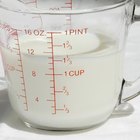
How to Measure Liquid Ingredients

Can I Put Butter in Brownie Mix Instead ...
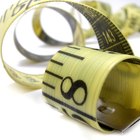
How to Measure Bust Size
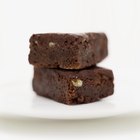
Can You Make Brownies Without ...
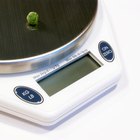
How to Convert a Measuring Cup to a ...
How to Substitute Sour Cream for Oil in ...

How to Find Out How Many Cups Is 3 ...

How to Find the Correct Bra Size
Should Cake Flour Be Sifted Before ...

What Causes Cupcakes to Be Dry?

How to Calculate Your Bra Size
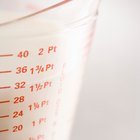
How to Convert Fractions With Cooking
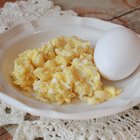
How Many Calories Are in One Scrambled ...

How to Measure a Finger of Scotch

How to Measure a Cup of Water

Can Fast Acting Yeast Be Used in Place ...

Can You Make Scones With Coconut Flour?
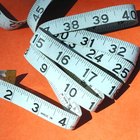
How to Measure Breast Size
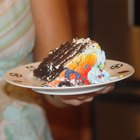
Substitutes for White Sugar in a Cake
References
- The Professional Pastry Chef; Bo Friberg
- Kids With Food Allergies: Cooking and Baking Without Egg Ingredients
Writer Bio
Fred Decker is a trained chef and prolific freelance writer. In previous careers, he sold insurance and mutual funds, and was a longtime retailer. He was educated at Memorial University of Newfoundland and the Northern Alberta Institute of Technology. His articles have appeared on numerous home and garden sites including GoneOutdoors, TheNest and eHow.
Photo Credits
Dick Luria/Photodisc/Getty Images